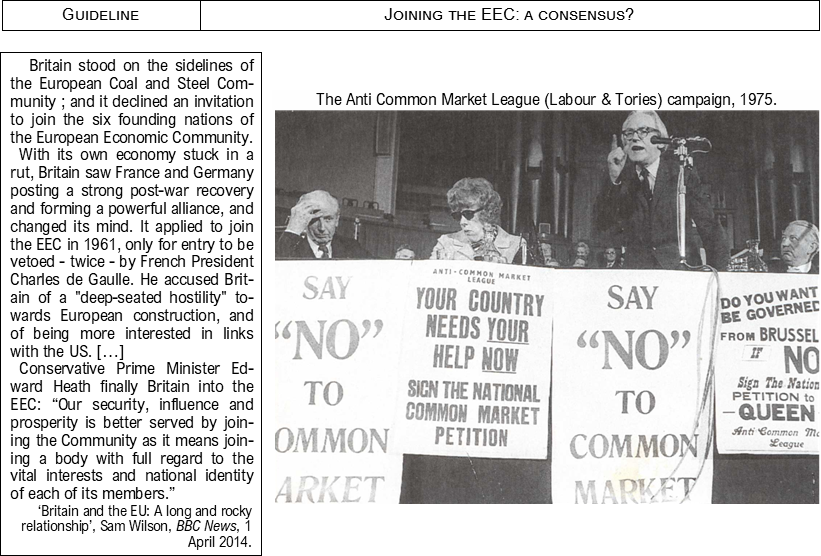![]() BRITAIN AND EUROPE 1973-2020 • • METHOD 1
BRITAIN AND EUROPE 1973-2020 • • METHOD 1

Stage 1 - Introduction: presenting the documents
Similarities: Both documents wonder if joining the European Economic Community was a consensus -between the Conservative and Labour parties when the UK joined the EEC (1961-1975) (facts).
Differences: The 1st document is an article by Sam Wilson describing the UK-EU stormy relations and posted on BBC News website on 1 April 2014. The 2nd document is a photo showing The Anti Common Market League campaign for the 1975 referendum.
Give structure: In a 1st part I’ll analyse how the UK joined the EEC thanks to the article & in a 2nd part I’ll show that it stayed in the EC using the photo.
Stage 2 - Analysing the documents
| DESCRIBING - What you see (docs) |
INTERPRETING - What you know (notions) |
| 1. Joining the EEC thanks to article |
|
|
P1 The refusal. UK refused to join both the ECSC and the EEC |
- For free trade and eco liberalism (defs) but against loss of sovereignties (defs) |
| 2. Staying in the EEC with photo |
|
|
Eurosceptic (def) feared federation, supranational superstate (defs), petitoned the QSueen, a symbol of unity in troubled times (2E Politics) and bizarrely against free trade (def) |
Stage 3 - Concluding
Assess docs: To conclude, these documents are reliable as we have their full references and both unbiased as they describes the facts, what actually happened.
Sum-up ideas: These docs show the British political consensus between the Conservative and Labour prties to apply, join and stay in the EEC with only political extremes contesting the decision.
Open: We may wonder how the relationship between the UK & Europe evolved when Margaret Thatcher -the Iron Lady, became PM or With the 1975 referendum Britain decided to stay in Europe, what about the 2016 referendum?